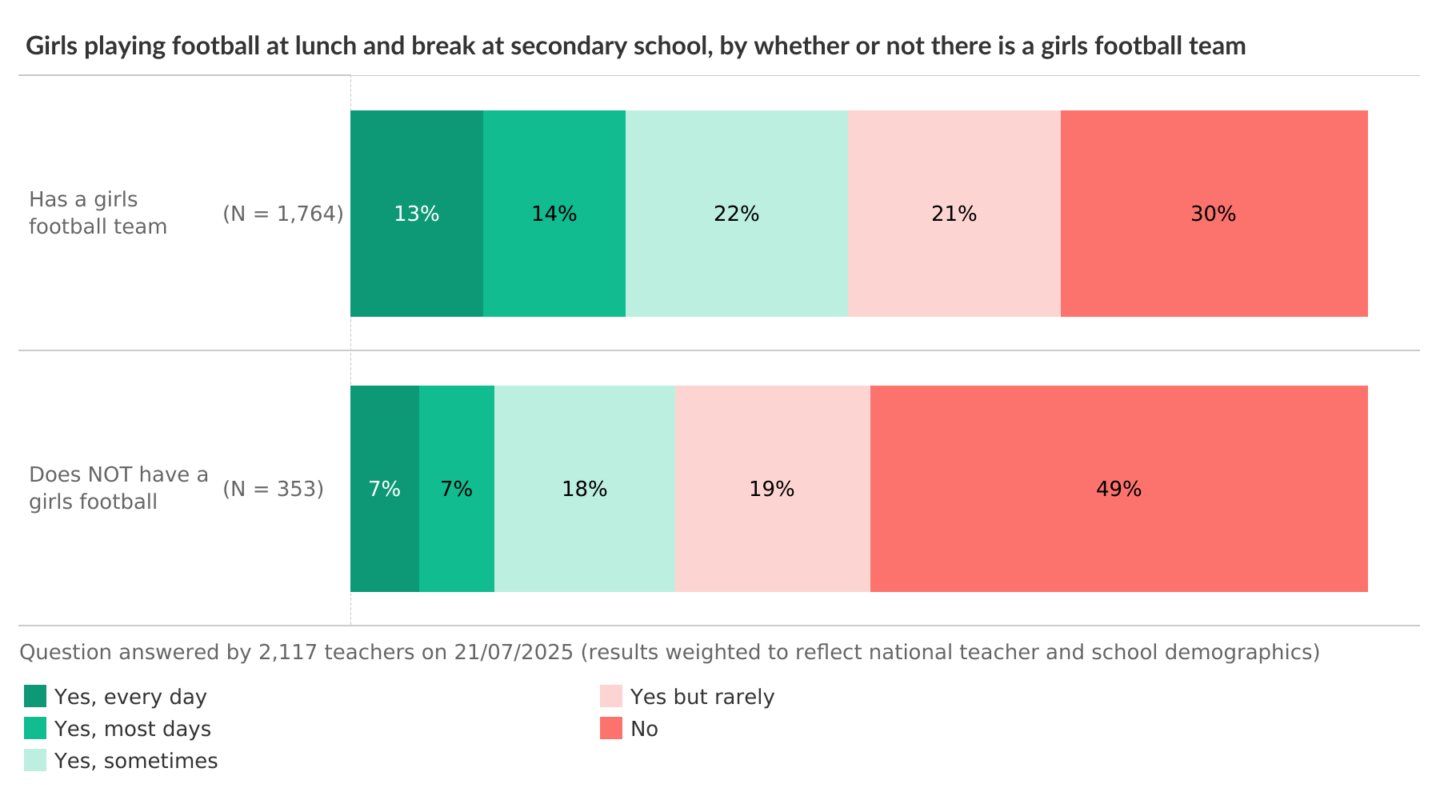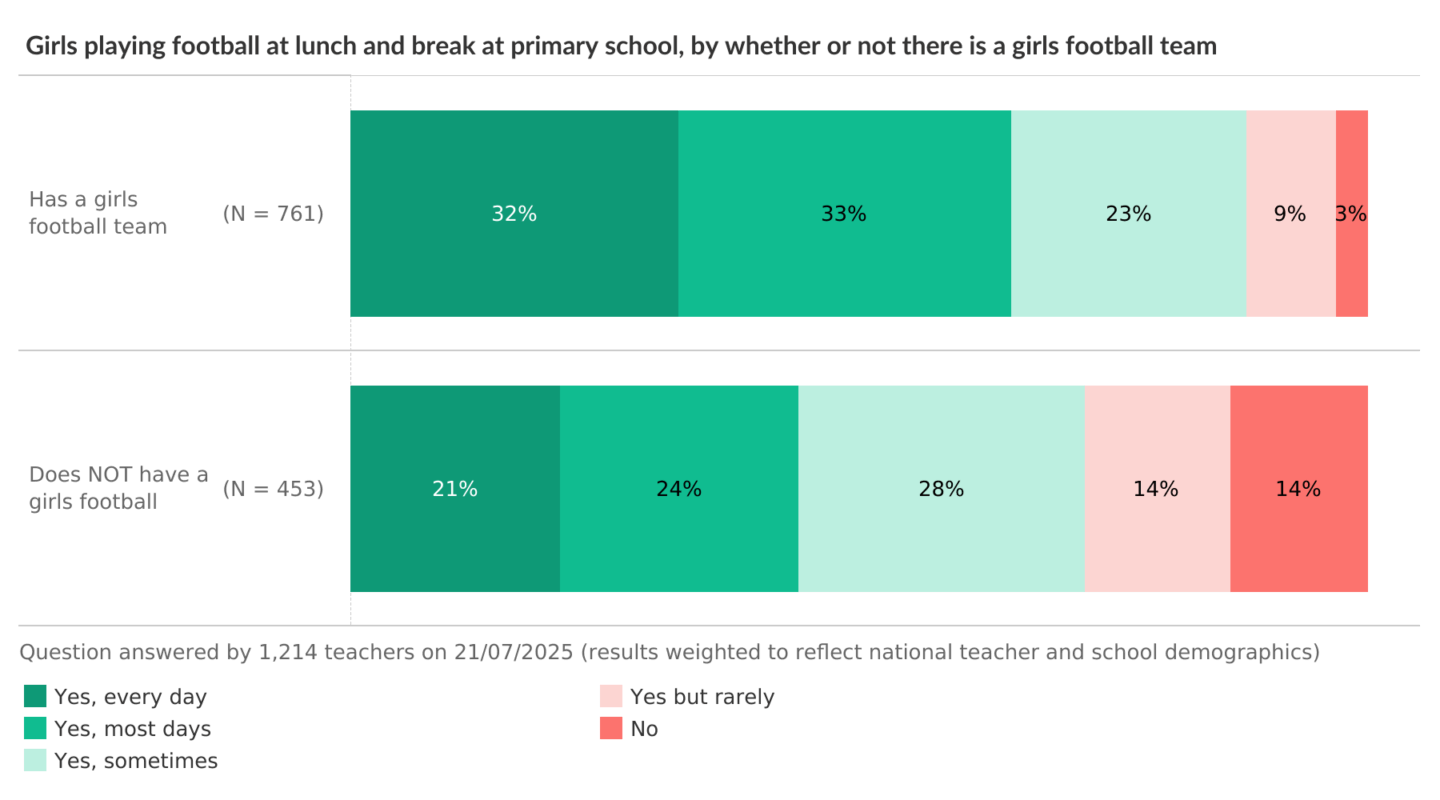Hello, Tappsters!
In the last few years, something exciting has been happening on school playgrounds and sports fields: more and more girls are getting involved in football. From kickabouts at lunchtime to organised teams and fixtures, participation is on the rise. But how far have we come—and where do the gaps still lie?
We dived into recent Teacher Tapp data to find out. Here’s what we uncovered. 👇
1. 🏃♀️ Girls Are Playing More Football at Lunchtime
Let’s start with the informal stuff—lunchtime football.
- In primary schools, the number of teachers who regularly see girls playing football at lunch has jumped from 46% in 2022 to 56% in 2025. That’s a big shift in just three years and suggests that football is becoming a much more normalised part of the school day for girls.
- In secondary schools, the numbers are smaller but still growing—16% in 2022 up to 23% in 2025. That’s a nearly 50% increase. Not too shabby!
Boys playing football at lunch hasn’t seen any change over the same time period – 83% of primary and 91% of secondary see boys playing football every or most days!
So, while boys still dominate the lunchtime pitch in many schools, the grass is starting to even out.
2.🏆 Girls’ Teams Are Catching Up—At Least in Primary
We also looked at whether schools have official girls’ football teams.
- In primary schools, the percentage with girls’ teams has soared from 37% in 2022 to 51% in 2025. That’s now almost equal to the number of schools with boys’ teams (53%)—a remarkable move towards parity.
- In secondary schools, things aren’t quite as equal. While 91% of mixed secondary schools have a boys’ team, only 78% have a girls’ team. That’s still a gap—and one worth paying attention to.
3. 📣 Why Girls’ Teams Really Matter
Here’s where it gets super interesting. Having a girls’ football team isn’t just about formal matches—it actually transforms everyday play.
In secondary schools:
- 27% of schools with girls’ teams say girls play football regularly at lunchtime.
- That number drops to just 14% in schools without a girls’ team.
In other words: girls are twice as likely to play lunchtime football if their school has a girls’ team.

In primary schools:
- In schools with a girls’ team, 65% of teachers see girls playing football most or every day.
- Without a team? That falls to 45%.

Having a team clearly helps create a culture where football feels like an option for everyone – not just the sporty or super-confident.





